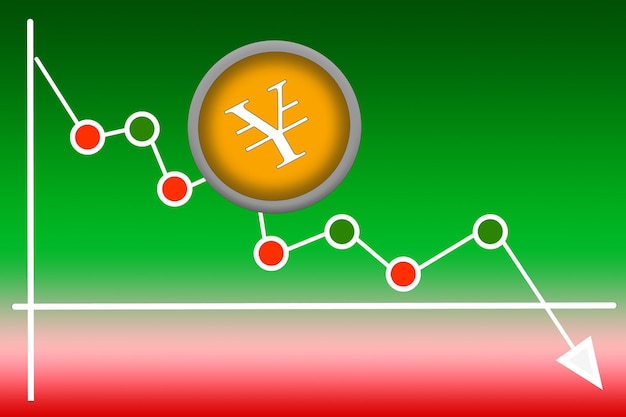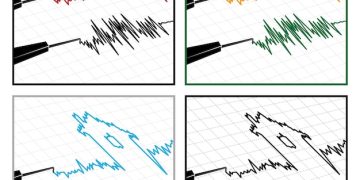Investing in Options: Advanced Strategies for Experienced Investors

Investing in options involves leveraging advanced strategies to enhance portfolio returns and manage risk, requiring a deep understanding of market dynamics and sophisticated techniques like spreads, combinations, and volatility plays tailored for experienced investors.
Ready to take your investment game to the next level? Investing in options can be a powerful tool for experienced investors looking to enhance returns and manage risk more effectively. Let’s dive into the world of advanced options strategies, equipping you with the knowledge to navigate this complex landscape.
Understanding Advanced Option Strategies
Advanced option strategies go beyond simply buying calls or puts. They involve combining multiple options contracts, often with different strike prices and expiration dates, to create positions that profit from specific market scenarios. These strategies require a solid understanding of option pricing models, risk management, and market dynamics.
Spreads: Limiting Risk and Reward
Spreads are a popular advanced option strategy that involves simultaneously buying and selling options on the same underlying asset. This helps to limit both potential profit and potential loss, making them a more conservative approach than buying a single option.
- Bull Call Spread: Buy a call option with a lower strike price and sell a call option with a higher strike price. Profitable if the underlying asset’s price increases.
- Bear Put Spread: Buy a put option with a higher strike price and sell a put option with a lower strike price. Profitable if the underlying asset’s price decreases.
- Butterfly Spread: Combine a bull and bear spread to profit from a narrow range of prices.
Using spreads effectively requires analyzing the potential profit, loss, and breakeven points for each strategy. It’s also essential to consider the time decay of the options as they approach their expiration date.

Delving into Combination Strategies
Combination strategies involve using both call and put options to create a more complex position. These strategies are often used to profit from volatility or to hedge existing positions.
Straddles and Strangles: Playing Volatility
Straddles and strangles are popular combination strategies that profit from significant price movements in either direction.
- Straddle: Buy a call option and a put option with the same strike price and expiration date. Profitable if the underlying asset’s price moves significantly up or down.
- Strangle: Buy a call option with a higher strike price and a put option with a lower strike price, both with the same expiration date. Similar to a straddle, but requires a larger price movement to become profitable.
- Iron Condor: A neutral strategy that profits from low volatility, involving four options: selling a call and a put at strike prices close to the current market price, while also buying a call at a higher strike price and a put at a lower strike price to limit potential losses.
Combination strategies are more complex than simple option buys, requiring careful consideration of volatility, time decay, and potential risks.
Understanding the Greeks
The Greeks are a set of values that measure the sensitivity of an option’s price to various factors. Understanding the Greeks is crucial for managing risk and making informed trading decisions.
Key Greeks and What They Measure
Each Greek represents a different aspect of an option’s behavior:
- Delta: Measures the change in an option’s price for every $1 change in the underlying asset’s price.
- Gamma: Measures the rate of change of Delta.
- Theta: Measures the rate of decay of an option’s value over time.
Mastering the Greeks allows traders to adjust their positions based on changing market conditions and manage their risk exposures more effectively.
Volatility Strategies
Options trading allows for playing the volatility of certain securities without actually owning those; so volatility can be used as a way to profit once you understand how to read market fluctuations.
Using Volatility As A Tool
With options strategies its all about reading market data, the same goes for volatility as investors need to be aware of market dynamics for that specific security. Here are some points:
- Implied Volatility: This metric reflects the market’s expectation of future price fluctuations. Buying options when implied volatility is low can be advantageous if you anticipate an increase in volatility.
- Historical Volatility: By analyzing past price movements, you can gauge how volatile a stock typically is. This can inform your decision on whether current implied volatility is over or undervalued.
- VIX Index: The Chicago Board Options Exchange (CBOE) Volatility Index, or VIX, measures the market’s expectation of volatility over the next 30-days. It can be a useful tool for gauging market sentiment and potential swings.
Options are more than just tools for speculation; they also can be used to hedge existing positions and make safer choices with the proper knowledge.

Risk Management Techniques
Effective risk management is crucial for success in options trading. It involves understanding the potential risks and rewards of each strategy and implementing measures to protect your capital.
Position Sizing and Stop-Loss Orders
Proper position sizing and the use of stop-loss orders are essential tools for managing risk.
- Position Sizing: Determining the appropriate amount of capital to allocate to each trade based on your risk tolerance and account size.
- Stop-Loss Orders: Placing orders to automatically exit a position if it reaches a certain price level, limiting potential losses.
- Diversification: Not putting all your eggs in one basket. Spreading your investments across different assets and strategies can reduce overall portfolio risk.
By implementing a robust risk management plan, traders can protect their capital and increase their chances of long-term success in the options market. Trading is risky on its own, so you need to know how to manage it in the best possible way.
Tax Implications of Options Trading
Understanding the tax implications of options trading is crucial for maximizing your after-tax returns. Different options strategies can have different tax consequences, so it’s essential to consult with a tax professional.
Wash Sale Rule
The wash sale rule disallows a loss on the sale of stock or securities if you purchase substantially identical securities within 30 days before or after the sale. This rule also applies to options trading.
Navigating the tax landscape of options trading can be complex, it’s important to keep accurate records of all your trades and consult with a tax advisor to ensure compliance and optimize your tax strategy. Before trading, make sure you know all of it.
| Key Point | Brief Description |
|---|---|
| 📈 Bull Call Spread | Profitable if the asset’s price increases, limits risk and reward. |
| 📉 Bear Put Spread | Profitable if the asset’s price decreases, also limits risk and reward. |
| 🎯 Straddle | Profitable with big price movements in either direction buying both call and put. |
| ⚠️ The Greeks | Delta, Gamma, Theta, factors to asses and manage the risks of the operation. |
FAQ
▼
A bull call spread involves buying a call option with a lower strike price and selling a call option with a higher strike price, both with the same expiration date. It profits from a moderate increase in the underlying asset’s price.
▼
Straddles involve buying both a call and a put option with the same strike price and expiration date. They profit when the underlying asset’s price moves significantly in either direction, making volatility the key factor.
▼
Implied volatility is the market’s expectation of how much an asset will move in the future. It is derived from options prices and reflects the level of uncertainty or risk perceived by investors.
▼
Risk management is crucial because options trading involves leverage and potentially unlimited losses. Proper risk management techniques, like position sizing and stop-loss orders, protect your capital.
▼
The wash sale rule disallows a loss on the sale of securities if you purchase substantially identical securities within 30 days before or after the sale, including options. Understanding this rule is essential for tax planning.
Conclusion
Investing in options using advanced strategies can be a rewarding endeavor for experienced investors. By understanding the intricacies of spreads, combinations, volatility, and risk management, you can enhance your portfolio’s performance and navigate the markets with greater confidence. Always remember to trade responsibly and consult with financial professionals when making investment decisions.





